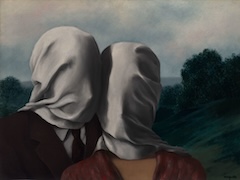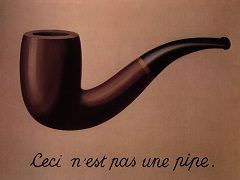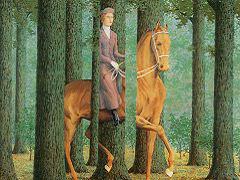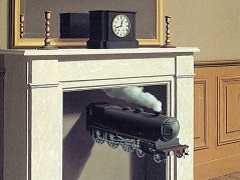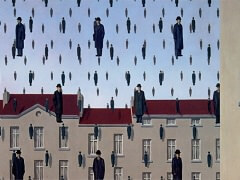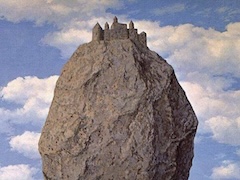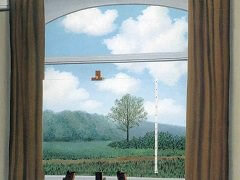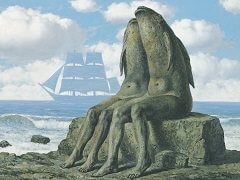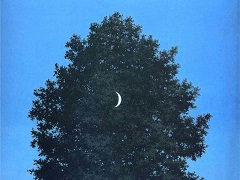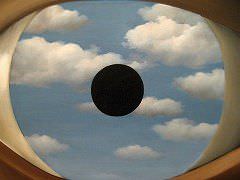Memory of a Voyage, 1951 by Rene Magritte
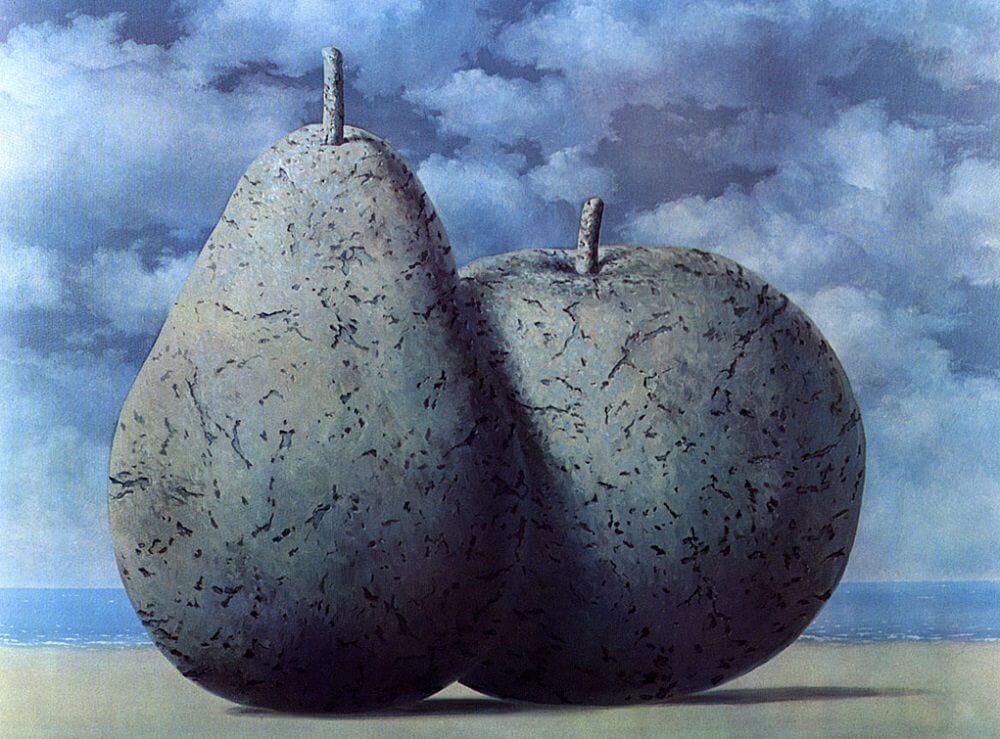
Magritte's "Stone Age" set in shortly after the outbreak of World War II (when he made birds and leaves of stone), but it was not until the 1950s that it attained its full and truly impressive proportions - the same period that coffins (including Perspective: The Balcony by Manet) appear in his work. His fascination for stone ranged widely. The Domain of Arnheim, The Castle in the Pyrenees, are less directly related to the process of petrifaction than are Memory of a Voyage series. In this series the process embraces the whole of life, descending upon it as the streams of lava once descended on Pompeii; in Magritte's case, it is the memory's lavastream.
The Castle in the Pyrenees he has altered the laws of gravity and the behavior of matter, but space, and the landscape, continue to breathe. In Memory of a Voyage nothing has changed in the natural aspect of people and things except the materials they are made of. Because everything has become petrified, transfixed as in a monument, there is a terrible impression of all breathing having come to a stop. Here the word "souvenir," a prominent component of all works of the Romantic era, acquires an almost cynical - and, in any case, ironical - intonation.
Human memory has been swept up into the mystery of life that has been brought to a halt, but even the petrified wears away and disappears. It is not mere coincidence that during the same period Magritte also encased the living in coffins - that is, removed them from direct sight.



